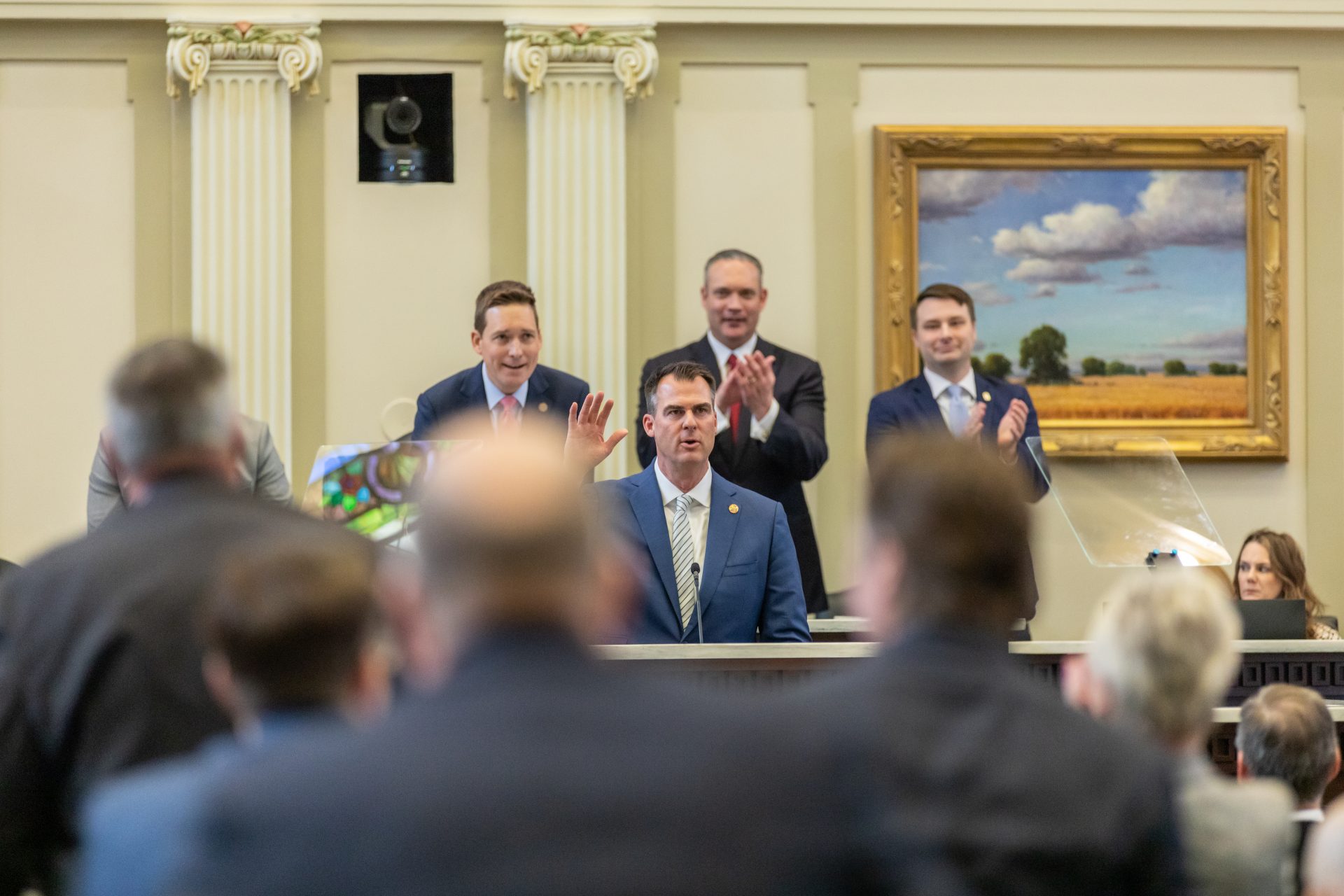
Oklahoma Governor Kevin Stitt delivers the State of the State Address, Feb. 7, 2023.
Legislative Service Bureau


Oklahoma Governor Kevin Stitt delivers the State of the State Address, Feb. 7, 2023.
Legislative Service Bureau
Oklahoma Gov. Kevin Stitt revealed $382.6 million in education priorities for this legislative session at the State of the State Address Monday, and vouchers are at the top of his wishlist.
Stitt’s big ticket ask is $130 million toward the establishment of education savings accounts, also known as vouchers, which would allow public dollars to be used for education expenses, including private school enrollment. The legislature will decide what, if any, of Stitt’s proposal it wants to include in the final budget.
“Parents spoke loud and clear at the ballot box last November in support of our vision to create more options for kids,” Stitt said at Monday’s address. “We know not every student learns the same way. Every child deserves a quality education that fits their unique needs.”
Sen. Julie Daniels (R-Bartlesville) filed Senate Bill 822, which sets up savings accounts to be used for qualifying expenses as long as the student is not enrolled in a public, charter or magnet school. Her bill allocates nearly $275 million to these accounts.
Stitt’s education wishlist also has similar priorities to the proposal recently presented by State Superintendent Walters — with a few alterations. The governor wants to dedicate $100 million toward student reading initiatives, like Walters’ budget. And, similarly, it also includes a performance-based teacher pay raise.
But instead of $150 million for teacher merit raises that Walters proposed, Stitt’s list takes that down to $50 million. Both are a far cry from the budget proposal approved by previous Superintendent Joy Hofmeister last year, which included $309 million for an across-the-board $5,000 teacher raise.
There are educator teacher pay raise bills, all of which include across-the-board raises:
Senate Bill 40 by Sen. David Bullard (R-Durant) wouldn’t implement performance-based raises immediately, but instead creates a task force to study and make recommendations for a merit pay system.
Though there is no guarantee this early in the process of any kind of raises, neighboring states are prioritizing teacher pay. A bill in Texas would give teachers a $15,000 across-the-board raise and support staff a 25% raise. Another in Arkansas would bump starting pay up from $36,000 to $50,000 for teachers and from $11/hr to $15/hr for support staff by June 2024 — and in the meantime, give teachers an additional, immediate $10,000 raise.
One other teacher-focused issue made the governor’s proposal: increasing the state’s Teacher Retirement System by $16.8 million. Stitt said this is due to an increased estimate in revenue sources.
Also included in Stitt’s educational wishlist is a $100 million “Innovative School Fund,” which would “create new schools focused on innovation, unlocking student potential and address workforce pipeline needs across the state.” Stitt referenced the Norman Aviation Academy as an example of what those programs could look like.
“Let’s fund students, not systems,” Stitt said.
Lastly, Stitt wants half a million dollars to go toward expanding concurrent enrollment to high school freshmen and sophomores.
As for colleges and universities, Stitt’s proposal would give an additional half-million dollars (from $873,405,811 to $873,905,811) to the State Regents for Higher Education for allocation. In his address, he highlighted familiar Diversity, Equity and Inclusion program (DEI) talking points also favored by Walters.
“We expect our tuition to pay for their education, not their indoctrination,” Stitt said. “I want our universities to have less DEI officers and more career placement counselors.”
Walters, who also serves in Stitt’s cabinet as Secretary of Education, recently called for a 10-year review from the Oklahoma State Regents for Higher Education of its spending history and current materials used for DEI programs.
The review found the $10.2 million — of which the state contributed $3.7 million — budgeted for this fiscal year’s DEI programs amounts to less than a third of one percent of all higher education spending, and about a tenth of one percent of state expenditures on higher education.
It also characterized Oklahoma’s DEI programs: in addition to issues around race and gender identity — also serve veterans, low-income students, people with disabilities, single mothers, international students and refugees, and students aging out of the foster care system.
The governor’s full budget proposal can be found here.